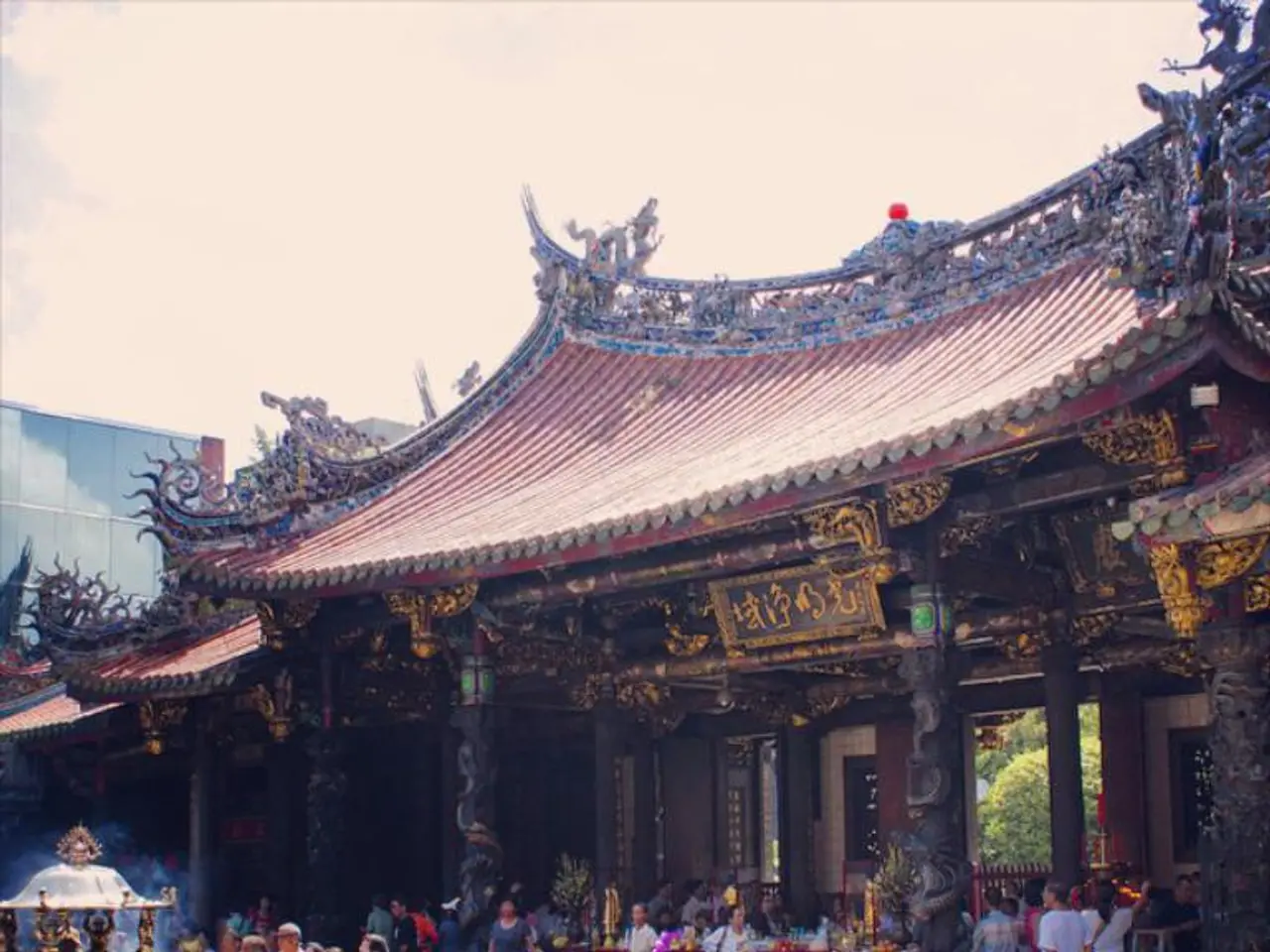Japanese Mythological Deities: Raijin and Fujin Representing Thunder and Wind
In the rich tapestry of Japanese mythology, two powerful deities stand out - Raijin and Fujin, the gods of thunder and wind.
Origins
These twin gods trace their origin to the Shinto creation myth, being children of the divine couple Izanagi and Izanami, who are central deities responsible for the creation of the Japanese islands and many kami (gods) [4].
Appearances
Raijin and Fujin are fearsome and awe-inspiring deities.
- Raijin, the god of thunder, lightning, and storms, is commonly depicted as a demon-like figure surrounded by drums, which he uses to produce thunder. He often holds a hammer or drumsticks and has a menacing, wild expression [3].
- Fujin, the god of wind, is shown as a deity with wild hair, carrying a large bag of winds over his shoulders, which he releases to create breezes or storms [3].
In artworks and temple sculptures, Raijin and Fujin are often portrayed together, with Raijin on the left and Fujin on the right side [3].
Roles
Their primary role is to control the elements of weather related to storm phenomena. As a pair, they are feared but also highly respected deities whose powers shape the natural world. They are also believed to be responsible for the kamikaze ("divine wind")—fierce typhoons that protected Japan from Mongol invasions in 1281 by destroying the invading fleets [3].
Beyond Mythology
Beyond their mythical roles, Raijin and Fujin stand as guardians at temple gates, such as Tokyo's Kaminarimon at Sensō-ji Temple and Kyoto's Sanjūsangen-dō Temple. They are also a significant part of Japanese art, appearing in anime, video games, and modern art, from Street Fighter's Akuma drawing inspiration from their design to countless artistic works [1].
In Japanese folklore, children hear tales about hiding their belly buttons so Raijin won't strike them with lightning, blending myth with playful warnings [2].
In summary, Raijin and Fujin are iconic Shinto kami symbolizing thunder and wind, embodying powerful natural forces both feared for their destructive potential and revered for their role in protecting and shaping Japan [1][3][4]. Their roles extend beyond mythology, reaching daily life, art, and even playful traditions.
[1] "Raijin and Fujin: The Thunder and Wind Deities of Japan." Japan Today, 2021, www.japantoday.com/category/lifestyle/features/raijin-and-fujin-the-thunder-and-wind-deities-of-japan. [2] "Raijin, the Japanese Thunder God." ThoughtCo, 2021, www.thoughtco.com/raijin-the-japanese-thunder-god-1693011. [3] "Raijin and Fujin." Encyclopædia Britannica, 2021, www.britannica.com/topic/Raijin-and-Fujin. [4] "Shinto." Encyclopædia Britannica, 2021, www.britannica.com/topic/Shinto.
- Delving into the realm of lifestyle and self-development, understanding the essential elements of Japanese culture can provide valuable insights, such as the significance of Raijin and Fujin, the gods of thunder and wind, in Shinto mythology.
- In the realms of fashion and beauty, these deities have left an indelible mark on various forms of modern art, including anime, video games, and contemporary art.
- For food and drink connoisseurs, learning about the history of Japanese cuisine might unveil intriguing tales like the one surrounding the divine wind, the kamikaze, a phenomenon believed to be caused by Raijin and Fujin.
- As one navigates relationships and their evolution, the traditional roles of Raijin and Fujin as guardians of temple gates, like Kaminarimon at Sensō-ji Temple in Tokyo, can serve as a bridge to understanding the rich cultural context of Japan.
- Beyond general news and contemporary events, following weather patterns and recent natural disasters provides an opportunity to appreciate the ongoing impact of these ancient gods, with their power to shape and protect Japan from storms.




